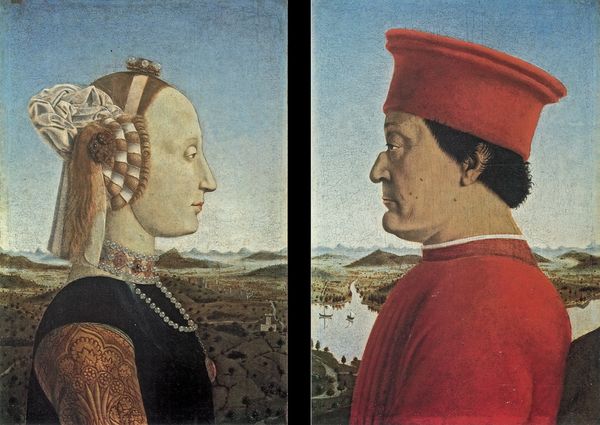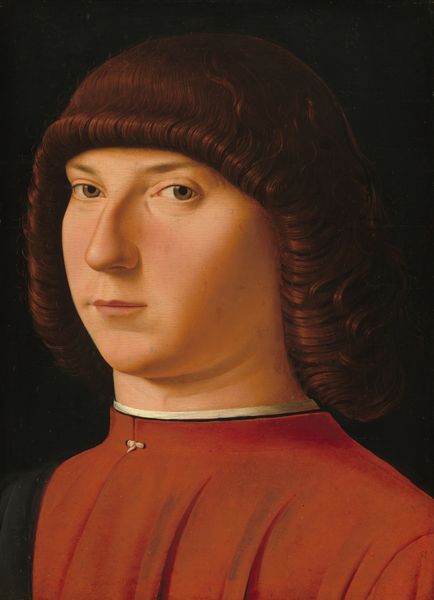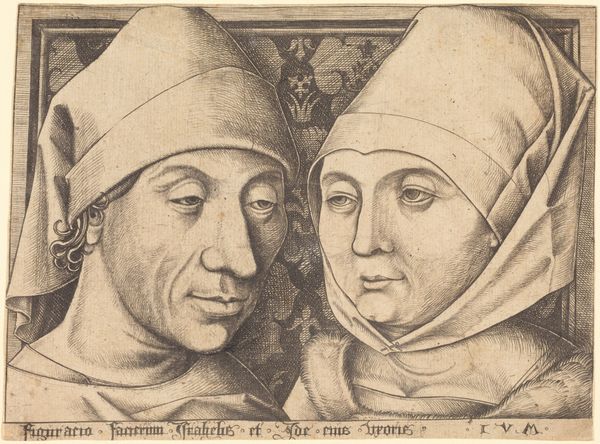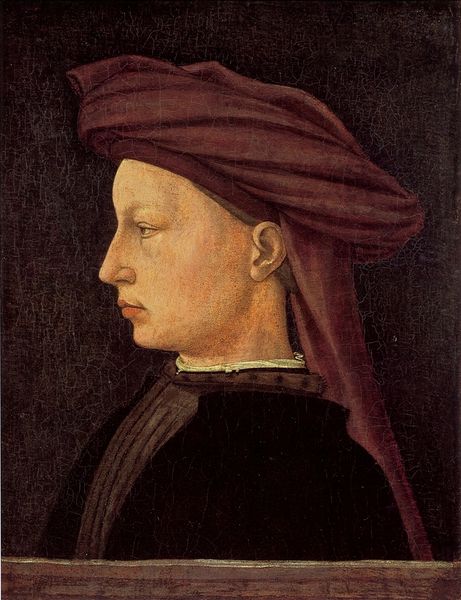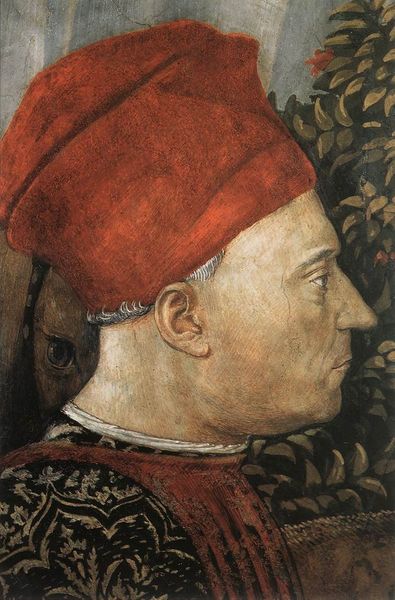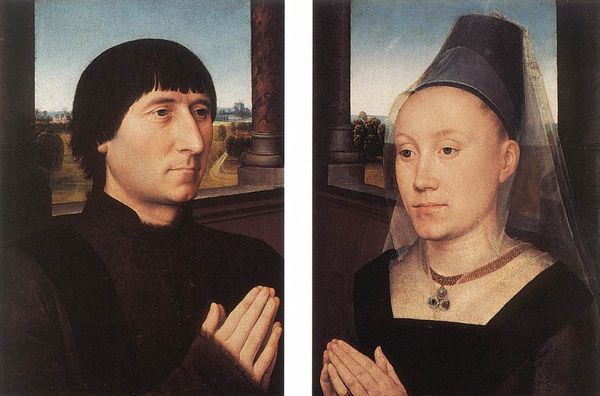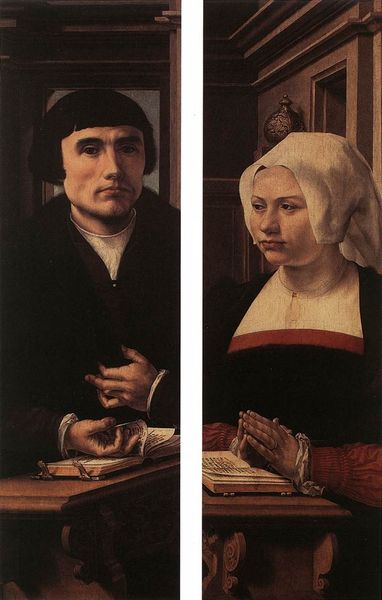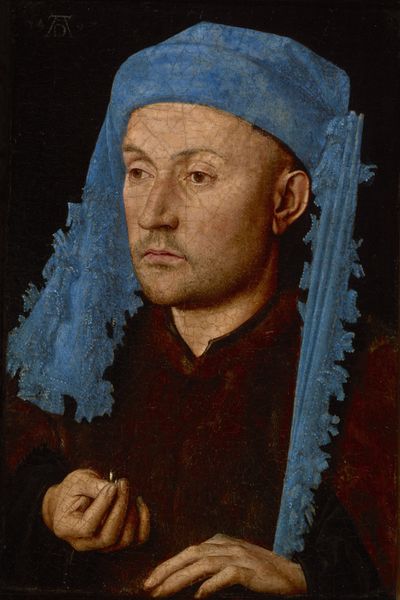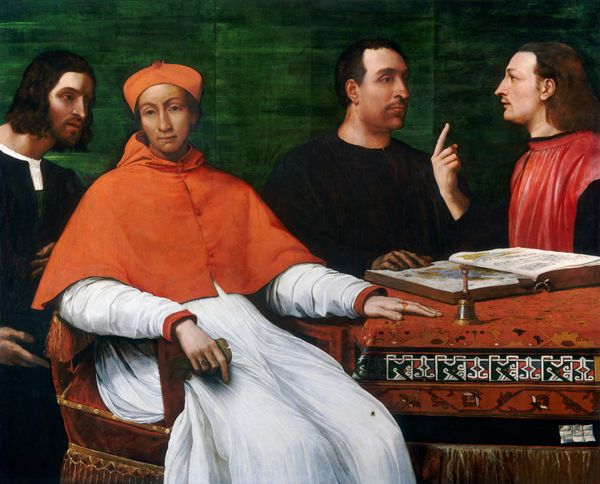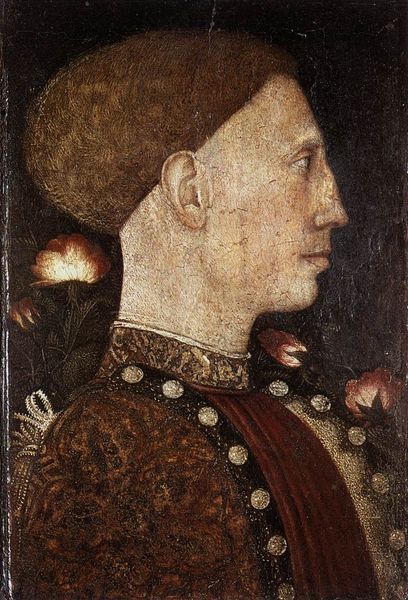
oil-paint
#
portrait
#
oil-paint
#
figuration
#
history-painting
#
italian-renaissance
Copyright: Public domain
Curator: Before us, we have "Portraits of two members of Medici family", currently housed at the Kunsthaus Zürich. Though the artwork lacks a confirmed creation date, it is attributed to Andrea del Castagno. What strikes you most about it initially? Editor: It’s the striking use of red. Not just the color itself, but the sheer quantity. It's as if the artist deliberately amplified its presence, focusing the viewer's eye while also hinting at luxury through pigment, fabric and garments. Curator: The intense red certainly asserts the figures' status. It’s worth considering how dress codes of the time reflected and enforced hierarchical social structures. These weren't just decorative choices, they signaled power and lineage in Renaissance society, particularly for a family as influential as the Medici. Editor: Indeed. The texture rendered is interesting—especially when considering the expense of acquiring the skills needed to create such pieces, the cost of the dyes, and the manual labour involved. What kind of workshop produced these materials? Were guilds involved? How did that shape production norms? Curator: Precisely. By focusing on the socio-economic context, we reveal how works such as this become embedded within networks of production, consumption and display. The Renaissance was a moment of increasing trade, globalization, the creation of early capitalistic structures— and all of this is reflected in how portraiture functions at this moment in history. It solidifies the relationship between gender and wealth, with visual power plays always at work. Editor: I’m left thinking about the labor required to achieve these visuals, both from the artist and the textile workers. Also, how has its interpretation changed over time, through various modes of production and consumption? Curator: Reflecting on those power dynamics inherent within art history enriches our understanding of their subjects and their place in a society fundamentally built on inequality and class differences, an imbalance still relevant today. Editor: And when examining artistic techniques we may uncover details regarding distribution, economics and the means of manufacture, to add another dimension.
Comments
No comments
Be the first to comment and join the conversation on the ultimate creative platform.
